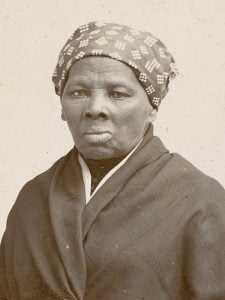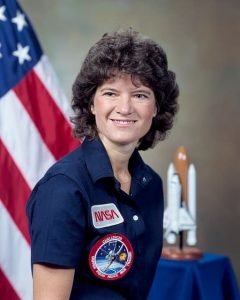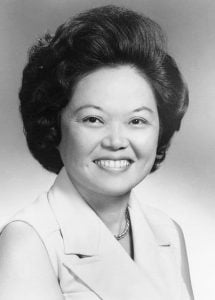Send a Care Package to Your Strong and Independent Student
Throughout history, women have stood up for what they believed in, worked hard to achieve their goals, and showed the world exactly what they were made of. For International Women’s Day, My College Crate is highlighting three American women whose impacts are still felt today.
We hope their stories will inspire today’s young people to continue to stand up for their beliefs and forge their own paths.
Harriet Tubman, More Than an Abolitionist
 American children first learn about Harriet Tubman in elementary school, with the lesson focusing mostly on Tubman’s involvement in helping enslaved people escape slaveholders via the Underground Railroad. But there’s a lot about Harriet Tubman that most people don’t know.
American children first learn about Harriet Tubman in elementary school, with the lesson focusing mostly on Tubman’s involvement in helping enslaved people escape slaveholders via the Underground Railroad. But there’s a lot about Harriet Tubman that most people don’t know.
Harriet Tubman was born into enslavement in 1822. While enslaved, she sustained a serious head injury when an overseer hit her in the skull with a metal weight. As a result, she experienced severe headaches, seizures, and a narcolepsy-like condition for the rest of her life.
Despite her disabilities, she was able to escape slavery and complete about 13 missions to rescue enslaved people using a network of abolitionists and safe houses. She helped John Brown plan his raid on Harpers Ferry, although she wasn’t present at it.
During the Civil War, Tubman worked for the Union Army as a cook, nurse, armed scout, and spy. She even led an armed assault during the war, in the Combahee River Raid, during which more than 750 enslaved people were rescued. Despite her service to the Union Army, Tubman was repeatedly denied a soldier’s payment and pension.
As she aged, her seizures and headaches from her head trauma prompted doctors to recommend brain surgery, which she underwent in the late 1890s in Boston. She declined anesthesia for the procedure, and instead bit down a bullet, as she’d seen Civil War soldiers do during limb amputations.
Over the years, Tubman’s contributions left her living in poverty, but she never stopped giving. In her later years, she worked to promote women’s suffrage alongside the likes of Susan B. Anthony and Emily Howland.
In the early 20th century, Tubman donated a parcel of land to the African Methodist Episcopal Zion Church in Auburn, New York, where she made her home, with instructions to make it a home for “aged and indigent colored people.” The Harriet Tubman Home for the Aged opened in 1908; in 1911, Tubman herself was admitted there before passing away from pneumonia in 1913.
Ride, Sally Ride
 Sally Ride was the first American woman and first known LGBTQ+ person in space, at just 32 years old. She remains the youngest astronaut ever to travel to space.
Sally Ride was the first American woman and first known LGBTQ+ person in space, at just 32 years old. She remains the youngest astronaut ever to travel to space.
Sally Ride earned a scholarship to a private, all-girls school in Los Angeles, where she was a nationally-ranked tennis player. Ride took a break from college to pursue a professional tennis career, but chose to pursue a PhD in physics from Stanford University.
Ride was just one of 35 people out of 8,000 applicants to be selected to attend astronaut training as part of NASA Astronaut Group 8 in 1978 — the first ever class to select women. In 1983, she served as a crew member on the Challenger for a mission known as STS-7. She recorded her second space flight in 1984 for STS-41, also aboard the Challenger. She was set to perform a third mission when the Challenger disaster occurred.
To investigate the Challenger accident, Ride was named to the Rogers Commission and headed its subcommittee on operations. She also served on the commission overseeing the investigation for the Columbia disaster — the only person to serve on both. Later, Ride led NASA’s first strategic planning effort and founded the Office of Exploration.
In the late ‘80s, Ride began working for Stanford University and the California Space Institute, where she led NASA public outreach programs. She wrote or co-wrote seven children’s books on space, encouraging kids to study science. She co-founded Sally Ride Science with Tam O’Shaughnessy, her romantic partner from 1987 to 2012, when Ride passed away of pancreatic cancer.
Patsy Mink, Discrimination Fighter
 Patsy Mink was a third-generation Japanese American born and raised in Maui, Hawaii. After experiencing racism and working to eliminate segregation policies at the University of Nebraska, Mink went on to the University of chicago Law School. After graduation, she and her husband returned to Hawaii with their infant daughter.
Patsy Mink was a third-generation Japanese American born and raised in Maui, Hawaii. After experiencing racism and working to eliminate segregation policies at the University of Nebraska, Mink went on to the University of chicago Law School. After graduation, she and her husband returned to Hawaii with their infant daughter.
In Hawaii, Mink was not allowed to take the bar examination because Hawaii law stated women who did not marry citizens of Hawaii forfeited their Hawaiian territorial residency. Mink worked to change the sexist law, and passed the examination, becoming the first Japanese-American woman licensed to practice law in Hawaii.
However, she was unable to find employment because she was a woman, married with a child. Instead, she started her own law practice in 1953, taking cases in criminal and family law, which many other law firms avoided. Mink became interested in politics, founding the Everyman Organization, which served as the hub of the Young Democrats in Oahu. She worked on John A. Burns’ congressional campaign and as a staff attorney for the Hawaiian territorial legislature in 1955. That’s when she decided to run for a seat in the territorial House of Representatives.
She won her seat, becoming the first Japanese-American to serve in the house; two years later, she ran for a seat in the Senate and won, becoming the first woman to serve there, where she was known for her independent thinking and intense interest in socio-economic issues, including education, employment, housing, and poverty. In 1960, as the vice-president of the National Young Democratic Clubs of America, Mink spoke in favor of civil rights at the Democratic National Convention in Los Angeles. But she wasn’t done yet.
In 1964, Mink ran for federal office and earned a seat in the U.S. House of Representatives, the first woman of color and the first Asian-American woman to do so. She served 12 terms, during which she introduced the first comprehensive initiatives under the Early Childhood Education Act, and worked on the Elementary and Secondary Education Act of 1965.
In 1971, she initiated a lawsuit that led to changes to presidential authority under the Freedom of Information Act. And in 1972, Mink co-authored the Title IX Amendment to the Higher Education Act, signed into law by President Nixon. The act was later renamed the Patsy T. Mink Equal Opportunity in Education Act in 2002. Title IX prohibits sex-based discrimination in any school or education program that receives federal money.
While in office, she introduced the Women’s Educational Equity Act of 1974, which allocated funds to promote gender equity in schools; promoted the Consumer Product Safety and Equal Employment Opportunity Acts of 1972 and the Equal Credit Opportunity Act of 1974; and worked to pass bills dealing with discrimination in a variety of scopes, including insurance practices, pensions, social security survivor’s benefits, equitable jury service, health care issues, housing discrimination, and more. She was a staunch supporter of the ratification of the Equal Rights Amendment
Mink was the first East Asian-American woman to run for president of the United States, seeking the nomination from the Democratic Party. To do so, she entered the Oregon primary as an anti-war candidate, although she didn’t receive an official nomination.
From 1977 to 1979, Mink was the federal ASsistant Secretary of State for Oceans and International Environmental and Scientific Affairs. In 1980 to 1982, she was the president of Americans for Democratic Action, before she returned to Honolulu to serve on the city council.
In 1990, Mink was re-elected to Congress, where she served until 2002, when she passed away from viral pneumonia, a complication of chickenpox.
Send a College Care Package to Your Dynamo
 To celebrate International Women’s Day on March 8 — and to give a gift designed to keep your student feeling happy and healthy — order our “March to Your Own Beat” college student care package.
To celebrate International Women’s Day on March 8 — and to give a gift designed to keep your student feeling happy and healthy — order our “March to Your Own Beat” college student care package.
Each month’s limited edition gift box features a new theme, and for March, it focuses on the universal language of music and how it forms the soundtrack to our lives. Perhaps your strong-willed student marches to the beat of Beyonce, or maybe Stevie Nicks, or perhaps Dolly Parton. Regardless of the music in their headphones, our care package is ideal for every student attending university or prep school, away from home.
Place your order for a college care package today, or sign up for our care package subscription service, so your student receives a new themed gift box every month of the year.
Want the latest deals & discounts?
Sign up for our newsletter and stay up to date on our latest products as well as deals and discounts!



